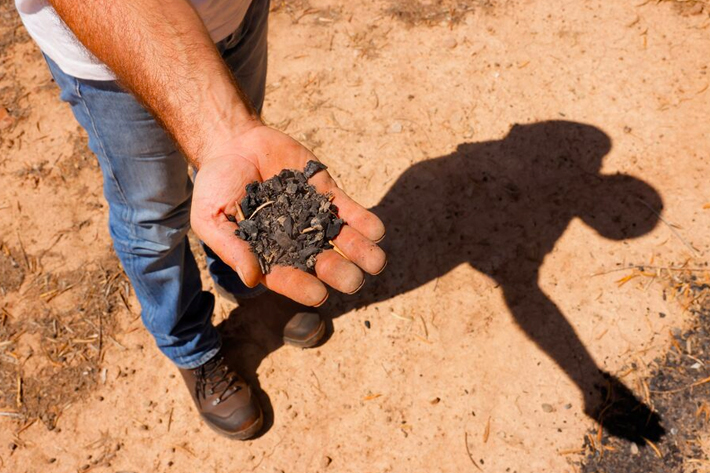An expanding carbon elimination technique has the possible to resolve international plant food scarcities while likewise lowering farming contamination, a brand-new research study discovers.
Biochar is a charcoal-like compound made from melting raw material such as dead timber, plant deposits, human waste and farming waste in a reduced oxygen setting via a technique called pyrolysis.
Research Study It changes making use of typical plant foods, concentrating on biochar generated by human waste, particularly waste matter, which is likewise a crucial resource of worldly warming gas.
Likewise on AF: Trump’s tolls promote ask for India’s boycott people items
Researchers have actually formerly claimed that human waste matter in garbage dumps and wastewater therapy systems generates a great deal of methane and laughing gas – both greenhouse gases and are a lot more effective than co2. Stanford College researchers formerly claimed the wellness division is in charge of 2% to 6% of international methane exhausts.
Yet the brand-new research study, led by researchers at Cornell College and researchers at the United Nations Food and Farming Company, discovered that if the very same human waste is exchanged biochar, it might end up being an efficient nutrient resource for plants, with the capability to change traditional plant foods.
The scientists of the research study discovered that biochar readjusted for farmers’ requirements can give 15% yearly phosphorus management, 17% nitrogen, and 25% potassium. A guardian record
” Speaking about wastewater is not as interesting as renewable resource, however protecting against source waste by developing a round economic situation is likewise crucial to the environment-friendly change,” claimed the Guardian, teacher of dirt biogeochemistry at Cornell College and lead writer of the research study.
The research study likewise mentions that this biochar will certainly be less complicated to save and carry, as the pyrolysis procedure can lower the weight of human waste by 85% to 90% and the quantity by 74% to 90%. “Aside from hefty steels, all virus and many contaminants can be eliminated from this human waste by pyrolysis,” the scientists likewise claimed.
The Guardian record keeps in mind that these aspects might resolve the issue of typical routines spreading out cured sewer sludge on farmland. A specific issue, the record describes, is that this waste “typically includes microplastics, hefty steels, PFAS for life chemicals, virus and medications.”
Fix plant food scarcities
The research study likewise specifies that in the procedure of transforming this waste right into biochar, “private nutrients can be recorded separately and as required certain plants and dirt mixes.” This will certainly make biochar so reliable to create plant foods.
This is particularly helpful for Asia, which has actually been excited by passion in scarcities of plant foods and high plant food rates, given that Russia started getting into Ukraine in 1922. The resulting scarcities increase food rates and increase food rates and lower malnourished treats partly of Africa and components of Asia. Previous records
Although the scarcity influences farmers worldwide, Southeast Oriental nations particularly – Houses of loads of reduced- and middle-income farmers – Feeling the discomfort of rising rates.
Geopolitical issue has actually likewise raised stress on Oriental nations. India, for instance, is combating a significant plant food scarcity Currently As China minimizes the supply of extensively utilized plant food diammonia phosphate (DAP). The reliable scarcity is specifically stressing for bad farmers in the nation, as it goes to the optimal of the expanding period.
That is, the big difficulty of utilizing this biochar as a plant food might be its price competition, while typical techniques can be less costly via economic climates of range. Manufacturing of biochar typically needs substantial arrangement and several pyrolysis kilns, which can make the end product fairly pricey.
Researchers of the research study explained that resolving the issue of price competition will certainly need connecting biochar manufacturing to “market devices consisting of however not restricted to carbon credit histories.”









